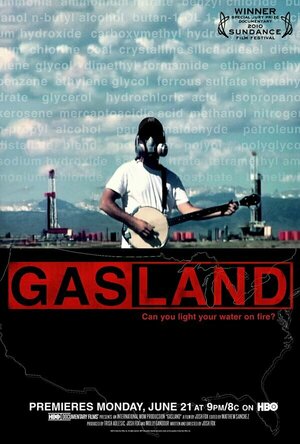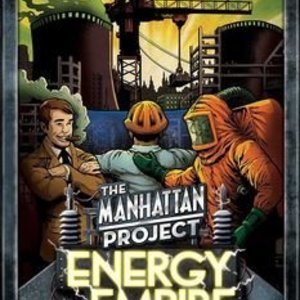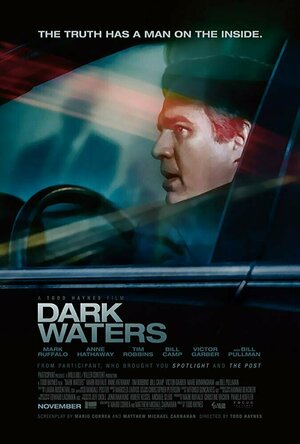Search
Search results
Erika (17789 KP) created a video about track New Pollution by Beck in Odelay by Beck in Music
Jun 21, 2019 (Updated Jun 23, 2019)
April Rose Mossow (93 KP) rated Aquaman (2018) in Movies
Jun 30, 2019
Rutger Hauer recommended GasLand (2010) in Movies (curated)
Rolling Stone's 306th greatest album of all time (424th in the 2020 list)
Absolutely stunning album and great to have a re-listen as part of my journey through Rolling Stone's top 500 albums of all time. There is not a bad song here, and the range of styles and influences are so diverse that each song could plausibly be a different artist. From the opener of Devil's Haircut to the sublime New Pollution and the wonderful Where Its At, there is no filler at all.
Lindsay (1779 KP) rated Nature's Confession in Books
Feb 15, 2018 (Updated Apr 9, 2019)
Are you a fan of Nature. Here a story about a boy and girl that need to fight to save Earth. It sure is about our world and saving the universe as for humanity.Ever wonder how the earth became the way it is. You learn about science along the way though story of two young teens. Are we destroy our own world and need to move to save it? Can we coexist in nature?We may be living a universe and that is that we may need to stop corporation for pollution and save our world. We may already have the technology for the wind and solar power.Are we letting corporations run and ruin our world? This story seems to put it that way and seem to be letting them. Why not take stand get them to work on putting solar and wind power and saving our Earth. The growth of pollution and money is not worth saving our own lives. I wish that we did something about it rather than stand by let it happen. I believe we are causing climate change or at least our government.
Matthew Krueger (10051 KP) rated The Manhattan Project: Energy Empire in Tabletop Games
Feb 22, 2021
Excellent Work Placement Game
The Manhattan Project: Energy Empire- is a excellent work placement game. I love work placement games and this one is one of them. Lets talk more about the game.
Players sit in the roles of countries trying to develop industry and energy production over a period of time roughly from the end of World War II to the present day. Throughout the game, players will construct buildings, power plants as dice, and manage the pollution in their environment with the aim of scoring the most points.
To begin play, the main board for Energy Empire is seeded with starting Building cards. These are divided into three different sectors: Government spaces, Industry spaces, and Commerce spaces. A set of pollution tokens, depending on the number of players, is also stacked on a track as the game timer.
Once the game begins, it flows continuously without rounds. Each player chooses, on their turn, to take a Work Turn or a Generate Turn.
Work Turn- During this type of turn, players must place a single worker on the main board on one of the spaces which represent activities and resources to collect. For example, this may be gaining science, steel, or purchasing oil. Afterwards, depending on which sector the player placed their worker, they can activate any previously purchased buildings, assuming they have enough workers and/or energy. Players can also activate their nation card and move up on the United Nations track, which is a pure competition for end game points. Energy is also used if a player wishes to place a worker on a space occupied by another worker. The player must place additional energy under the worker until their placement stack is larger than any other already placed.
Generate Turn: This type of turn represents the player resetting their work potential for a new set of placing workers. They do this by first potentially collecting an achievement which represents end game points for a variety of goals. They then recall any workers to their Player Mat and discard all Energy tokens. Players can also spend any oil resources to gain oil power plant dice. Finally the player rolls any or all power plant dice they have. This might include Solar/Wind (green dice), Hydro Power (blue dice, limited to one per player), Coal (black dice), and Nuclear (yellow dice). The resulting number of lightning bolts on the dice are delivered as energy tokens to the player. If a clean energy source rolled the highest cardinal number, the player does not collect pollution. If coal, oil, or nuclear dice resulted in the highest number, then the player places a single pollution token into their environment. Players continue this process one after another until a predesignated number of pollution tokens are removed from the game. Players get one final turn and then points are tallied. Players receive points for keeping their player mat free of pollution, building power plants, the United Nations track, and various points for each building constructed.
The most engaging part of the game and the main reason to seek it out, comes from the theme of global power intrigue. The building cards show off the exceptional art in the game.
Manhattan Project: Energy Empire Cards
The global impact cards for the first half of the game are green with a milder impact. Once they go red, prepare for some serious negative events. On top of this theme, the actions associated with everything in the game fit just right. The concept in game actions connect directly to the theme concept. In addition, the country actions to move up on the United Nations track also represent the tone and success formulas for those countries. The mechanism for rolling dice to gain energy and how much pollution is delivered feels just perfect given the competing goals of clean environments and high energy production.
The worker placement mechanism itself (largest stack among existing workers) is not new, but it is just the right mechanism to promote the overall feeling of energy competition. Choosing the space on which to place a worker is highly engaging and the choices tense to maximize efficiency. It is easy to connect with both strategy and tactics in this game.
Even with this engagement, it is also easy to see optimal routes for gaining points assuming opponents follow their strategies. It’s not “easy”, but it is possible to not even worry about opponents blocking a particular path to victory with low numbers of players.
Its a excellent work placement game. One i highly recordmend getting and play.
Players sit in the roles of countries trying to develop industry and energy production over a period of time roughly from the end of World War II to the present day. Throughout the game, players will construct buildings, power plants as dice, and manage the pollution in their environment with the aim of scoring the most points.
To begin play, the main board for Energy Empire is seeded with starting Building cards. These are divided into three different sectors: Government spaces, Industry spaces, and Commerce spaces. A set of pollution tokens, depending on the number of players, is also stacked on a track as the game timer.
Once the game begins, it flows continuously without rounds. Each player chooses, on their turn, to take a Work Turn or a Generate Turn.
Work Turn- During this type of turn, players must place a single worker on the main board on one of the spaces which represent activities and resources to collect. For example, this may be gaining science, steel, or purchasing oil. Afterwards, depending on which sector the player placed their worker, they can activate any previously purchased buildings, assuming they have enough workers and/or energy. Players can also activate their nation card and move up on the United Nations track, which is a pure competition for end game points. Energy is also used if a player wishes to place a worker on a space occupied by another worker. The player must place additional energy under the worker until their placement stack is larger than any other already placed.
Generate Turn: This type of turn represents the player resetting their work potential for a new set of placing workers. They do this by first potentially collecting an achievement which represents end game points for a variety of goals. They then recall any workers to their Player Mat and discard all Energy tokens. Players can also spend any oil resources to gain oil power plant dice. Finally the player rolls any or all power plant dice they have. This might include Solar/Wind (green dice), Hydro Power (blue dice, limited to one per player), Coal (black dice), and Nuclear (yellow dice). The resulting number of lightning bolts on the dice are delivered as energy tokens to the player. If a clean energy source rolled the highest cardinal number, the player does not collect pollution. If coal, oil, or nuclear dice resulted in the highest number, then the player places a single pollution token into their environment. Players continue this process one after another until a predesignated number of pollution tokens are removed from the game. Players get one final turn and then points are tallied. Players receive points for keeping their player mat free of pollution, building power plants, the United Nations track, and various points for each building constructed.
The most engaging part of the game and the main reason to seek it out, comes from the theme of global power intrigue. The building cards show off the exceptional art in the game.
Manhattan Project: Energy Empire Cards
The global impact cards for the first half of the game are green with a milder impact. Once they go red, prepare for some serious negative events. On top of this theme, the actions associated with everything in the game fit just right. The concept in game actions connect directly to the theme concept. In addition, the country actions to move up on the United Nations track also represent the tone and success formulas for those countries. The mechanism for rolling dice to gain energy and how much pollution is delivered feels just perfect given the competing goals of clean environments and high energy production.
The worker placement mechanism itself (largest stack among existing workers) is not new, but it is just the right mechanism to promote the overall feeling of energy competition. Choosing the space on which to place a worker is highly engaging and the choices tense to maximize efficiency. It is easy to connect with both strategy and tactics in this game.
Even with this engagement, it is also easy to see optimal routes for gaining points assuming opponents follow their strategies. It’s not “easy”, but it is possible to not even worry about opponents blocking a particular path to victory with low numbers of players.
Its a excellent work placement game. One i highly recordmend getting and play.
Quinn Blackburn (3 KP) rated Svaha in Books
May 1, 2018
Potential and Change
Set in a future where people have retreated to walled cities, if they are lucky. Between the cities lies ravaged wasteland, mutants, polluted landscapes, disaster. Only Native American Enclaves have avoided the pollution running rampant through land and society. Years ago they withdrew with their superior technology, waiting for the day when their skills are needed to restore the Earth and heal the people. Gazhee, dogscout of the People, has been sent from his Enclave to report back on conditions and serve as the eyes of his people. His first task is to find out what happened to the Enclave plane brought down by someone in the nearest city. Has the time for healing begun, or is all hell about to break loose?
Awix (3310 KP) rated Godzilla Vs Hedorah (1971) in Movies
May 17, 2019
The movie that goes to show that when it comes to allegorical fables about the environment featuring man-in-a-suit monsters, subtlety isn't always necessary. Pollution-spawned jelly-beastie develops various peculiar powers and threatens Japan; Godzilla turns up to deal with it. Is the subtext that we should choose nuclear power over fossil fuels? Unlikely but possible.
Godzilla Vs Hedorah makes itself distinctive amongst the Godzilla films of the early 70s by virtue of its sheer, insidious weirdness, most of it due to Banno's direction: there are sudden switches to black-and-white, split screen sequences, educational segments, and allegorical cartoons. Doesn't stop it being mostly awful, but in a strangely hypnotic way, and it least it's obviously about a serious issue for a change. Possibly most infamous for the sequence where Godzilla uses his atomic breath as rocket thrust to fly with, but much other weirdness is also present. Bad, but very watchably bad.
Godzilla Vs Hedorah makes itself distinctive amongst the Godzilla films of the early 70s by virtue of its sheer, insidious weirdness, most of it due to Banno's direction: there are sudden switches to black-and-white, split screen sequences, educational segments, and allegorical cartoons. Doesn't stop it being mostly awful, but in a strangely hypnotic way, and it least it's obviously about a serious issue for a change. Possibly most infamous for the sequence where Godzilla uses his atomic breath as rocket thrust to fly with, but much other weirdness is also present. Bad, but very watchably bad.
Mediocre
After reading the blurb, I was excited when I first saw this film pop up on my recommendation list. Despite this, the film fell short of my expectations.
The actors were well cast, and believable in their emotions and actions. Striving to make their way in a world deemed uninhabitable by pollution. However the plot line was slow moving and lacked depth. My interpretation of a good sci-fi, is a story that makes the unbelievable, believable and in The case of IO, I did not get this feeling- if they knew higher ground was habitable, why was more of the population not saved? Why was the colonisation of Mars not considered, rather than take the struggling remains of humanity to far reaching unknowns? In actuality the film raised more questions than it answered.
The film was slow going with periods of melancholic inactivity. I believe the film would be better as a book, although comparisons could be made with Z for Zachariah.
Overall, this did not make it to my must watch again list.
The actors were well cast, and believable in their emotions and actions. Striving to make their way in a world deemed uninhabitable by pollution. However the plot line was slow moving and lacked depth. My interpretation of a good sci-fi, is a story that makes the unbelievable, believable and in The case of IO, I did not get this feeling- if they knew higher ground was habitable, why was more of the population not saved? Why was the colonisation of Mars not considered, rather than take the struggling remains of humanity to far reaching unknowns? In actuality the film raised more questions than it answered.
The film was slow going with periods of melancholic inactivity. I believe the film would be better as a book, although comparisons could be made with Z for Zachariah.
Overall, this did not make it to my must watch again list.
Ross (3284 KP) rated Dark Waters (2019) in Movies
Jul 14, 2020
Good, but lengthy
This real-life story of corporation pollution, corruption, arrogance and loophole exploiting is a fairly gripping one, as an embattled corporate lawyer (Ruffalo), used to defending chemical companies, takes on a case to sue DuPont, one of the main employers in West Virginia, for polluting the land and water next to his client's land.
What starts off as a very unpopular case within his own firm, soon develops into outrage and lawyers actually doing the right thing. Tim Robbins' senior partner in the firm is brought round by the evidence unearthed after tireless hours of wading through hundreds of boxes of "discovery" and gets behind the case in the pursuit of justice. In one passionate scene, he shouts down all other partners in the firm in order to make them see what is at stake and what the underlying issue is.
The film does drag a little and could have been sped up to an extent but there were few times where I found myself actually bored or reaching for my phone.
What starts off as a very unpopular case within his own firm, soon develops into outrage and lawyers actually doing the right thing. Tim Robbins' senior partner in the firm is brought round by the evidence unearthed after tireless hours of wading through hundreds of boxes of "discovery" and gets behind the case in the pursuit of justice. In one passionate scene, he shouts down all other partners in the firm in order to make them see what is at stake and what the underlying issue is.
The film does drag a little and could have been sped up to an extent but there were few times where I found myself actually bored or reaching for my phone.








